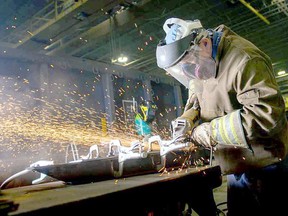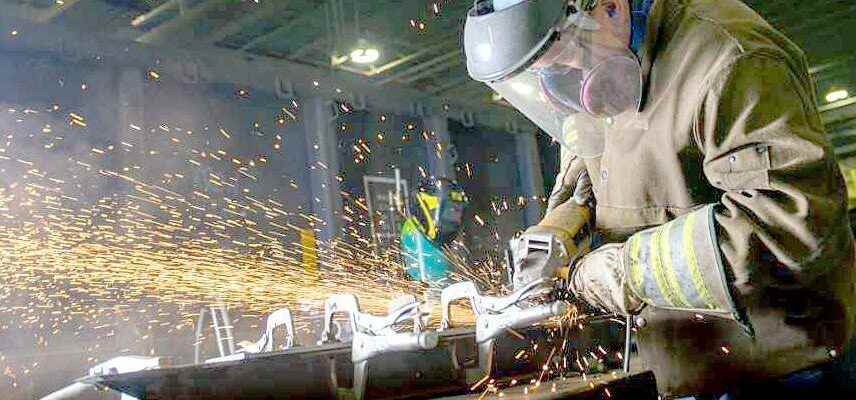While local investments have boosted tax revenues and lifted wages, local job vacancy rates are “well above” provincial and national levels

Stratford’s investments into economic development during the two years leading up to the COVID-19 pandemic have paid off, but job vacancy rates above provincial and national levels continue to signal an emerging shortage of skilled labour, a new report says.
The October report from the Conference Board of Canada, a not-for-profit think tank that analyzes economic trends, was recently shared with the city’s economic development corporation, investStratford.
According to the report, the $1.8 million that Stratford politicians sent to invest Stratford’s coffers between 2018 and 2020 have since resulted in an estimated $5.4 million in tax revenue from completed projects — a return on investment of over 200 per cent.
Those projects, many of which are located in the industrial Wright Business Park, have had “a direct, indirect and induced impact of $79.9 million on Canada’s GDP,” the report said.
Employment from those new or expanding businesses also lifted wages by $52.1 million across the country, according to analysts, with $45.1 million generated in Ontario and $19.6 million in Stratford.
On top of that, the capital investment phase of the completed projects in Stratford boosted tax revenue for all three levels of government by a total of $29.2 million, the report said. That number includes $14.6 million earned by the federal government, $13.1 million earned by the provincial government and $1.5 million earned by the municipal government.
There are also roughly $21.7 million of planned – but uncompleted – capital investment wins in Stratford’s pipeline, the report said. They are expected to add $19.2 million to Canada’s GDP – $16.2 million of which will be within Ontario, including $6.6 million in Stratford alone.
That’s the good news, said Joani Gerber, investStratford’s chief executive.
“Our job is to drive revenue for the community and for our businesses as best as we can, and so it’s really great to see we are returning that kind of investment back into the community,” she said.
The second half of the Conference Board of Canada report isn’t quite as positive.
Using data from Statistics Canada, the think tank’s deep dive into Stratford’s labor market profile shows job vacancy rates are running “well above” provincial and national levels.
Along with its aging population – the age distribution of Stratford’s residents has become increasingly skewed towards older groups – the city’s tight labor market “is another signal of a potential issue with a shortage of skilled labour,” the report said.
“Numbers tell a story and what the story is telling us is that we have had a great deal of success, but we also have a great deal of work,” Gerber said.
Although Stratford’s labor market is in a precarious position, data covering the decade between 2011 and 2021 show some signs of improvement.
The Stratford area’s population grew by an annual average of 0.8 per cent within that 10-year stretch – about 243 people per year – but in the latter five years, the pace of growth in the city has caught up to national and provincial averages. Stratford’s population in 2021 was 34,219, according to the most recent census, up from 31,703 in 2011.
Despite being lower overall between 2011 and 2021, Stratford’s employment growth has also improved during the latter part of that decade to 1.4 per cent per year, which is more in line with the 1 per cent and 1.3 per cent growth Canada and Ontario has posted, respectively.
Still, Gerber said the numbers suggest Stratford must find ways to attract younger residents to its workforce.
“Seeing in print that our population is older than the provincial averages translates into efforts around making sure young people, young families, see themselves in Stratford and have opportunities in Stratford to really fill some of those … job vacancy gaps,” she said.
The Conference Board of Canada report also offers some insight into the pandemic’s impact in the Stratford area, where goods producers in the region seem to have weathered the public-health crisis better than service providers.
Employment in manufacturing and construction in the Stratford area has climbed above 2019 levels, the report said, while employment on the services side continues to lag. Notably, arts, entertainment, recreation, accommodation and food-sector employment has declined at an annual average rate of just more than 11 per cent between 2016 and 2021, the report said.
Manufacturing and health care are the two largest employers in Stratford, each with about 15 per cent of the region’s jobs in 2021. Construction (11 per cent), wholesale/retail trade (13 per cent), agriculture (6.4 per cent) and utilities (5.6 per cent) round out the top five employers in the region.
